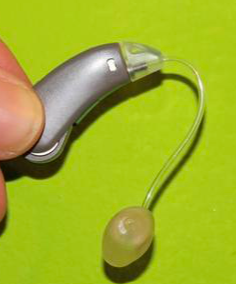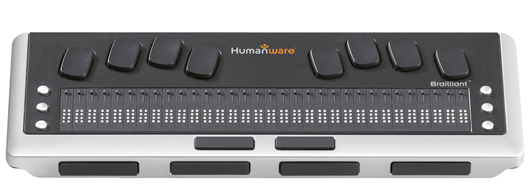PLI: Unit 4 Understanding Accessible Technologies
1/29
There's no tags or description
Looks like no tags are added yet.
Name | Mastery | Learn | Test | Matching | Spaced |
|---|
No study sessions yet.
30 Terms
Behind the Ear Hearing Aids (BTE)
largest of all the kinds
tube extends into the canal
easiest to adjust
volume wheel
T switch
What are the 3 positions for the T switch?
Primary listening position: used in most situations
T-Coil (telephone mode): orginially desinged to hear telephone better; reduces background noise while increasing the speach; can be paired with assistive listening devices to further improve hearing
Dampening position: Dampen sounds ideal for a restaurant setting
In the ear hearing aid (ITE)
fits completely in the ear
for mild to severe hearing loss
prefered by those who have difficulty with smaller devices
most reliable and inexpensive
can have a T-switch
In the canal hearing aids (ITC)
mild to severe hearing loss
smaller than behind the ear and in-the-ear hearing aid
custome sized for individual canal
more expensive
can be digital (bluetooth connection)
ability to change the battery
small compartment
can be rechargable
volume wheel can be challenging
wax guard - very tiny
Completely-In-the-canal hearing aid (CIC)
mild to severe hearing loss
smallest of all types of hearing aids
inserted further into the canal
no controls on them
string attached to remove the hearing aid
Made for Apple hearing aids (MFI)
use a hearing aid and a iPhone or iPad
does not use a streamer box - connects directly to the phone
not bluetooth connection
Accessibility ? MFi Hearing aids
“Start live listening” mode
What is the “Start Live Listening”
The iPhone becomes a microphone and feeds directly to the hearing aid
What type of hearing aid is pictured?
BTE

Which is the smallest and most expensive type of hearing aid?
CIC
Some hearing aids incorporate a T-switch, which allows the hearing aid to connect to…
a. Assistive listening devices
b. Telephones
c. Both
d. Neither
Both
Some hearing aids connect directly to Apple iPhone and other Apple mobile devices. This can also allow the iPhone to become an assistive listening device. What are these hearing aids called?
“Made for iPhone” or MFI hearing aids
What is an assistive listening device?
devices that help bring sound to someone’s ears
increase speech to noise ration
Where can assistive listening devices be used?
1:1 situations,
mediums sized groups,
auditoriums, cafeterias, gyms
Personal Listening Device
best for 1:1 situations
can have a wired microphone for speaker to talk into
speaker can wear headphones
accommodate a T-coil loop
FM System
uses radio broadcast tech
larger settings
transmitter and receiver
sound is transmitted wirelessly
speaker attaches microphone
can walk around
listener can use headphones
can be used with or without hearing aids
What is the most beneficial in larger settings like movies and auditorium?
Loop Technology
What is loop technology (induction loop)?
an assistive listening system that delivers audio directly to a person's hearing aids or cochlear implants via a magnetic field
can be installed in a large room around the perimeter
What are alerting devices?
use visual or tactile cues to notify individuals of environmental sounds like doorbells, smoke alarms, or phone calls
What is the primary function of an assistive listening device?
To improve the speech to noise ratio
Personal assistive listening devices may connect to which of the following items?
Select one:
a. Headphones
b. Hearing aids
c. Cochlear implants
d. All of the above
All of the Above
True or False: Assistive listening devices are only used for one-on-one conversations.
False
Listener
Receiver
Speaker
Transmitter
Assistive alerting devices/systems can connect to doorbells, fire alarms, baby monitors, and more. These systems can provide which kind of alert to their users? Select one:
a. Visual alerts (e.g. flashing light)
b. Auditory alerts (e.g amplified sound)
c. Tactile alerts (e.g. vibration)
d. Any/all of the above
Any/all of the above

What kind of device is shown/described in the photograph?
Refreshable braille display
True or False: DeafBlind consumers do not use smart phones
False
How can DeafBlind access their smart phone on the go?
using haptic feedback features
using a portable refreshable braille display
through an interpreter
using a portable refreshable braille display
Which of the following are accessibility applications that a DeafBlind person may use to access a mobile phone or other computing device? Select all that apply:
TapTapSee
Zoom Text (ZT)
Zoom
VoiceOver
JAWS
All of the above
JAWS
screen reader software the provides speech and Braille output
TapTapSee
mobile camera app that can take a picture or video and identify whatever is in the picture out loud